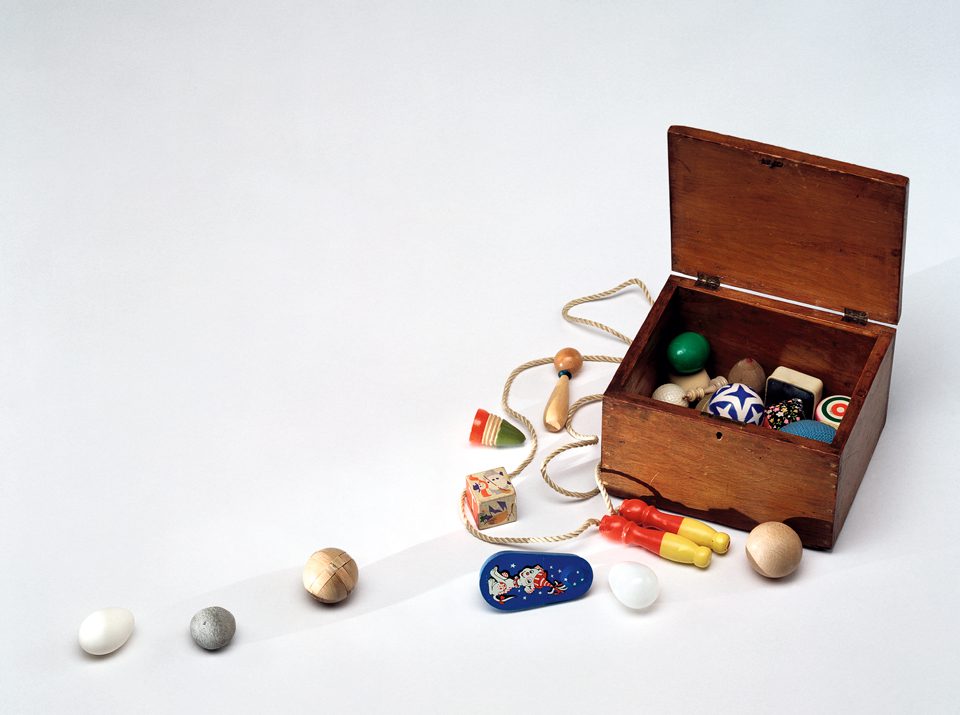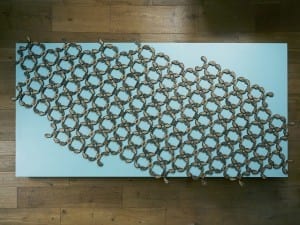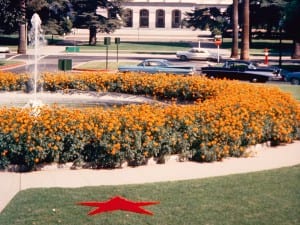Drawing inspiration from its own collection, The Walker Art Center dares to ask how art was finally taken off its pedestal and made to reassess what it is during the long 1960s.
The French Fluxus artist Robert Filliou famously stated: “Art is what makes life more interesting than art”. The shifting parameters, often radical, of what was held to constitute “art” during the 1960s and 1970s illustrate the attempt by some artists to make art more interesting than, or at least equal to, life.
This might sound a bit sensational or melodramatic, but the Walker Art Center in Minneapolis will showcase work coming out of the period which did just that: whether through Allan Kaprow’s 1962 environmental happening in a mushroom cave in Minnesota or Nam June Paik’s TV Cello of 1971, all of these artists pushed the boundaries of the field of “art”. The home of one of the most extensive and comprehensive Fluxus art collections in the world, the Walker Art Center is perfectly poised to take this curatorial task on. Curated by Eric Crosby, the exhibition consists of over 300 works by 100 artists in the Center’s collection, installed across 13,000 square feet of exhibition space.
Crosby has proposed a comprehensive consideration of two decades worth of artistic output and exploration. It is a daunting task, especially as many of the works to be exhibited are notoriously difficult to both categorise and install. Taking 1958 as the year of departure, the year in which artist and composer John Cage was teaching his classes in experimental composition at the New School in New York City, the exhibition moves through 20 years of art, ending in 1978, the year when Fluxus founder George Maciunas died.
In a way, it would be more fitting to call the exhibition Art Expanded: Cage to Maciunas, as the exhibition focuses quite overtly on these two artists and the movements and artistic practices they were associated with (experimental music, performative event scores, and Fluxus). Though these two artists may not necessarily be explicitly referred to throughout the show, their presence and influence is markedly noted. It is difficult to disentangle Cage from the work for which he is most well known: 4’33”. A musical score written by Cage in three movements and first performed in public by the pianist David Tudor in August 1952, the work is entirely without deliberate sound.
When first performed, Tudor sat in front of a piano, stopwatch in hand, for exactly 4 minutes and 33 seconds without striking a single note. Cage was interested in “negative sound”: the noises of the audience, the environment – the ambient sounds of the space in which the score was performed. For Cage, it epitomised his idea that any sounds can constitute music. He radically upended any traditional notion of music in this piece, but he should not be defined by this single, controversial work, as the compositions and performative pieces he executed during the 1960s and 1970s are as integral to this new expanded art form as 4’33” was when first performed. Crosby says that Cage, along with artists Ben Vautier and Tony Conrad “were exploring not music narrowly defined but the broader expansive – the audible – as being an aesthetic category and a broader category of experience.”
Cage could be considered the founding father of experimental music and taught, amongst others, George Brecht, Allan Kaprow and Robert Watts, artists for whom music, whether performed or not (as with Brecht’s mail-art in the form of event scores) was an integral point of departure in their work.
The social and artistic network which was formed during the 1960s, particularly in New York, was integral to this transformational artistic period. Brecht’s “mail-art” formed the basis of the 1962 Yam Festival in New Jersey, a year-long festival that brought together avant-garde artists, and is considered to be the predecessor to Maciunas’ formative 1962 Fluxus Internationale Festspiele Neuester Musik at the Wiesbaden Museum, Germany. The links between Cage and Maciunas are strong in terms of their interest in music and new media but Maciunas was quick to point out (in texts and correspondence to do with the Wiesbaden Festival), that Cage’s work served only as a starting point and was not the key overriding factor in the inception of the festival. Many of the artists who have been included in Art Expanded, 1958 -1978, were originally included in Fluxus Internationale Festspiele Neuester Musik.
Though Crosby pinpoints sound as the primary medium that truly expanded the horizons of what could be considered “art”, he also presents the more historical act of painting as a catalyst for these changes. The indeterminate, random and unpredictable results of abstract and expressionistic painting are epitomised through the works on exhibition by Piero Manzoni, Jasper Johns and Niki de Saint Phalle. The abstract paintings of de Saint Phalle are not really abstract at all – these “shooting pictures” show the remains of burst polythene bags of paint, burst by the firing of a gun either by de Saint Phalle or other participants. The resulting painting is executed purely by chance – by the velocity of the bullet, the angle of the painting, and the amount of paint in the plastic bag. The final resulting work, which is dependent on this active participation by the shooter, illustrates the importance of engagement – whether by the audience watching the process or by the artist.
This focus onto the audience and their changing participatory role is integral to the way traditional art forms were expanding. Crosby says that the shifting idea of spectatorship will be a key focus for the exhibition, whether through actual works by artists that demanded an audience, such as with Ben Vautier’s Ben’s Window (1962), or by the creation of event scores and compositions that demand an active performer (which is not necessarily the artist themselves). Ben’s Window, was part of Vautier’s Living Sculpture series. For this performance he moved into the display window of London’s Gallery One for a period of 15 days as part of the Fluxus Festival of Misfits of 1962. Replete with the comforts of home – a bed, desk, chair etc. – Vautier put the banality of everyday existence on show with a humorous slant. Many of the objects had handwritten text, comments and aphorisms, in Vautier’s singular graphic style. Questioning the visual consumption of objects by the viewer and the traditional aesthetic categorisations of what constitutes art, Vautier relied on an audience to justify and validate his “performance.”
This use of performance, whether implied or outright, is a central theme throughout the exhibition. Some works are subtle, raising questions, as with Paik’s TV Cello : is it a sculpture or an instrument to be played? This is a key example of the difficulties of categorising works of the period that fall within a performative and sculptural category. Other works are easier to identify, but not necessarily understand: the dance and choreography of Yvonne Rainer, perhaps encapsulating this idea the most sharply. Rainer trained under Merce Cunningham in NY and Trisha Brown in California and was a founding member, along with Brown, of the Judson Dance Theatre group of choreographers. Perhaps the most controversial of all those that taught there, Rainer was completely disinterested in saccharine, populist dance choreography. Her routines were deliberately banal, disconnected, and characterised by repetitive movements: she performed what has been called by many critics “anti-dance.” However, Sanjoy Roy, in a 2010 article for The Guardian newspaper, argued: “Spectators might be baffled, maddened or bored, but Rainer was not interested in gratifying her audience … her choreography insisted that the audience see plainly what is there instead of buying into some comfy illusion.”
Crosby has selected to exhibit Rainer’s iconic work Trio A, a work which was first performed in 1966 at the Judson Memorial Church in NYC as part of a larger performance entitled The Mind is a Muscle, Part 1. Improvisational and dynamic, but strangely dissatisfying as it lacks a climax, the sequence of movements resists any appreciative value from the audience. As with many of the works included in this exhibition Trio A challenges the audience to find any sort of comfort in its execution and its uncompromising aesthetic.
The emphasis on the body and motion was further abstracted by the kinetic artists who constructed and presented mechanically, or audience-driven sculptures and installations. A key pioneering exhibition in this regard was the Walker Art Center’s own Light / Motion / Space, presented in 1967.
Held in conjunction with the Milwaukee Art Museum and Howard Wise Gallery, NYC, it was the first major show of light and motion works in the United States. Willoughby Sharp, in his introduction to the exhibition catalogue, astutely stated: “The new age, the electric age, has created an environment that has reconfigured our senses. Seeing is no longer the primary means of knowing. Hearing, tasting, touching and smelling have now become more important. Our five senses are rapidly becoming more integrated. We now demand greater participation in situations and events. This radically alters our aesthetic needs.” Willoughby’s essay was more prescient than he could have perhaps imagined, as artists were already rapidly adapting to the emergence of new technologies and media, including television, dance, sound-art and mail-art, using these to subvert natural perceptible phenomena.
The use of motion specifically became key, and the presentation of kinetic works relied on the other kinetic sculptures they were exhibited alongside. The austere, utopian way we view and are presented with kinetic work today, essentially placing it on a pedestal, is completely at odds with the way in which it was intended to be presented. Frank Popper, in the introduction to the catalogue accompanying the 1970 exhibition Kinetics at the Hayward Gallery London, argued that the “emphasis on perception by as many of the senses as possible in a ‘total’ spectacle is a widespread tendency among kinetic artists […] to procure the spectator a strong emotional experience – even an irritation of the senses – by most unusual, striking and ‘spectacular’ motions”: this was the overarching concern of the kinetic artists.
Crosby wholeheartedly agrees with this approach and says that at the time the art was created, it “wasn’t about the singular kinetic experience of one individual work but rather a jumble of light and sound in the exhibition space.” The installation of these kinetic works, each in close proximity to one another, has therefore created an immersive gesamtkunstwerk.
Crosby has picked up the gauntlet by even conceiving of this exhibition, let alone through executing it. The finesse that it has been done with can only be achieved through an understanding of the oppositional nature of work of this specific period. Fluxus, by its very nature, is anti-institutional and against any categorical definition of art, so for Crosby to take Fluxus as the central basis of this exhibition and place it within the white-walls of the institution is brave but not foolhardy. Crosby describes Fluxus as a “termite”, eating away at all disciplines and movements and creating holes in which questions can arise.
The Flux films included in this exhibition present a unique understanding of this varied constellation of ideas. Paul Sharits’ film T,O,U,C,H,I,N,G (1968), which juxtaposes close-up images of the male and female genitalia in coitus; fingers scratching at the film’s frame; close-up images of an eye; this rapid sequence of images which are also combined with the accompanying audio of a voice continuously repeating the word “destroy” is disconcerting.
Disconcerting in terms of the speed in which the images are presented as well as by the verbal accompaniment, Sharits achieves a neural overload in the viewer and thus captures the essence of this exhibition: combining new media, sound, motion, performance, he creates a new hybrid form of viewing.
As much as the period was about the artists breaking down traditional media and disciplines, it was also about spectatorship and the destruction of the finely formed wall between artist and audience. Crosby has formed connections – as much as possible – with the different themes and works, in order to make this apparent. However, the resulting critical meditation on 20 years of art history reveals the many blind spots in public collections and it will be interesting to see how institutions react to this exposure.
Art Expanded, 1958 -1978 runs from 14 June to 8 March 2015, at the Walker Art Center, Minneapolis. Visit www.walkerart.org for further information.
Niamh Coghlan





